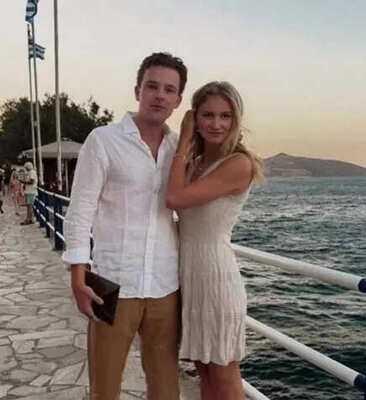A photo claiming to show Princess Elisabeth of Belgium with Prince Georg of Liechtenstein has been declared fake by royal officials , who confirmed it was generated using artificial intelligence. The image, which spread widely on social media this week, sparked speculation of a budding romance between two European royal houses for the first time in decades.
The picture appeared to show Princess Elisabeth, heir to the Belgian throne, standing close to Prince Georg during a supposed private outing. It quickly went viral, with tabloids and social media users suggesting it hinted at a relationship between the two young royals. For many observers, the image represented what could have been the first link between Belgium’s royal family and Liechtenstein’s princely house in more than 50 years.

Belgium’s royal household swiftly dismissed the photo, clarifying that it had never taken place and was “entirely artificial.” Officials stressed that Elisabeth, currently studying at Oxford University, was focused on her education and future royal responsibilities. The Liechtenstein family has not issued an official comment but sources close to the household echoed the Belgian palace’s position that the photo was fabricated.
Experts noted that the image bore hallmarks of AI generation, including inconsistencies in background details. Digital forensics analysts highlighted how advances in artificial intelligence make it increasingly difficult for casual viewers to distinguish between authentic and fabricated images. The incident has reignited debates about AI misinformation, especially concerning public figures and young royals who may be targeted by viral but false narratives.
Social media platforms lit up with a mix of humor, disappointment, and criticism once the photo was debunked. Some fans expressed amusement at how believable the AI-generated image looked, while others warned of the dangers of spreading misinformation, especially when it affects the reputation of young royals. A few users voiced disappointment, saying they had briefly enjoyed the idea of a “royal love story.”
The fake photo of Princess Elisabeth and Prince Georg shows how quickly AI-generated content can spread, shaping public perception before facts catch up. For the Belgian royal family, the incident was not just about quashing romance rumors but also about highlighting the growing challenge of digital misinformation in an era where truth and fabrication are increasingly hard to separate.
The picture appeared to show Princess Elisabeth, heir to the Belgian throne, standing close to Prince Georg during a supposed private outing. It quickly went viral, with tabloids and social media users suggesting it hinted at a relationship between the two young royals. For many observers, the image represented what could have been the first link between Belgium’s royal family and Liechtenstein’s princely house in more than 50 years.
Belgium’s royal household swiftly dismissed the photo, clarifying that it had never taken place and was “entirely artificial.” Officials stressed that Elisabeth, currently studying at Oxford University, was focused on her education and future royal responsibilities. The Liechtenstein family has not issued an official comment but sources close to the household echoed the Belgian palace’s position that the photo was fabricated.
Experts noted that the image bore hallmarks of AI generation, including inconsistencies in background details. Digital forensics analysts highlighted how advances in artificial intelligence make it increasingly difficult for casual viewers to distinguish between authentic and fabricated images. The incident has reignited debates about AI misinformation, especially concerning public figures and young royals who may be targeted by viral but false narratives.
Social media platforms lit up with a mix of humor, disappointment, and criticism once the photo was debunked. Some fans expressed amusement at how believable the AI-generated image looked, while others warned of the dangers of spreading misinformation, especially when it affects the reputation of young royals. A few users voiced disappointment, saying they had briefly enjoyed the idea of a “royal love story.”
🇧🇪🇱🇮 Is Belgian Crown Princess Elisabeth in a relationship with Prince Georg of Liechtenstein?
— [Wim Dehandschutter] (@WDehandschutter) September 28, 2025
📸 A photo has been going viral since Friday.
💬 The Royal Palace in Bxl told me: “We saw the photo too. We don’t know if it’s real or AI. We aren’t commenting [on private matters].” pic.twitter.com/HzU0mnK3IT
The fake photo of Princess Elisabeth and Prince Georg shows how quickly AI-generated content can spread, shaping public perception before facts catch up. For the Belgian royal family, the incident was not just about quashing romance rumors but also about highlighting the growing challenge of digital misinformation in an era where truth and fabrication are increasingly hard to separate.
You may also like

Punjab: 5 die of drug overdose in 3 days; state tops NCRB list

Cheryl Tweedy seen for first time since Liam Payne's funeral and stalking hell

Arsenal and Newcastle United told penalty VAR drama was a 'farce' in angry tirade

25 Offshore Crypto Exchanges Stare At Ban Over PMLA Non-Compliance

Lorraine Kelly goes topless with 'bigger buns' post for important reason







